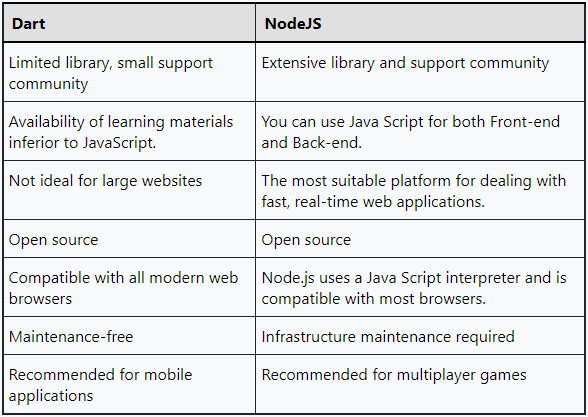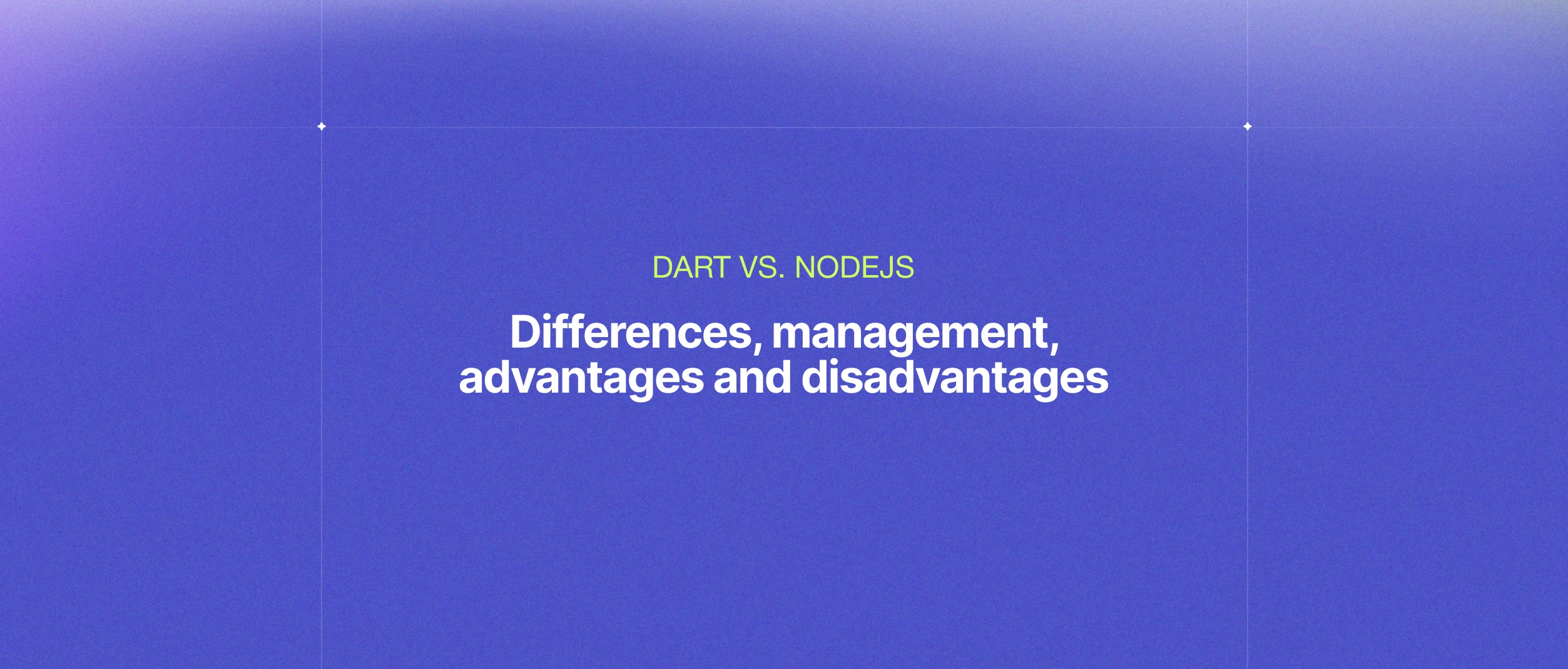As wediscussed before, Dart is a new object-oriented programming language that includes libraries, a virtual machine, and development tools, which together form a cohesive and scalable platform for creating applications that run on servers or the web (using Polymer.)
You can use Dart's libraries and tools to write pretty much anything, from simple scripts to full-featured applications. Additionally,its “Backed by Google” seal is the main reason why many developers choose it.
Node.js is a platform based on Chrome's JavaScript runtime environment and is used for easily building fast andscalable network applications. Its non-blocking, event-driven I/O model makes it lightweight and efficient, and it’s perfect for data-intensive real-time applications running on distributed devices. Node.js is open source and is primarily used to build high-performance and complex web applications.While Dart belongs to the “Languages” category of the technology stack, Node.js canbe classified under “Frameworks (Full Stack).”
Node.js has an event-driven architecture. It uses the single-threaded event loop model to handle multiple clients simultaneously. In short, multiple clients submit requests, and the server processes each of them before returning the response. Fewer threads mean fewer resources, which allows for faster execution. This enables Node.js to handle thousands of concurrent connections, making it a perfect choice for real-time applications.
On the other hand, Dart's compilation technology enables different forms of code execution:
- Native platform: Dart includes a Dart VM with just-in-time compilation (JIT) and anahead-of-time compiler (AOT) to produce machine code for desktop and mobile applications.
- Web platform: For web applications, Dart includes a development-time compiler (dartdevc) and a production-time compiler (dart2js). Both compilers translate Dart to JavaScript.
Taking into account that having a fast development cycle is critical for interaction, Dart VM offers a just-in-time (JIT) compiler with incremental compilation that allows hot reloading, live metrics compilations, and rich debugging support.
Let's look at some of the similarities and differences of Dart and Node.js:

Let’s discuss some of their advantages and disadvantages.
Node.js’ Advantages
- Node.js features a soft data stream. If you want to access a specific file while loading it, Node.js would allow you to do so. This feature is extremely beneficial for developers working with real-time audio or video encoding.
- Creating effective web solutions using this platform becomes noticeably easier thanks to NPM, the Node Package Manager. NPM is a repository of almost 50,000 packages available to developers to share, update, or reuse code using its tools.
- Node.js is lightweight and highly scalable. This is why it's a great favorite for microservice architectures. A microservice architecture divides the application into isolated and independent services. As these individual services are decoupled from each other, the architecture becomes easy to maintain.
Node.js’ Disadvantages
- The NPM registry seems to focus more on quantity than quality. While NPM’s core products have proven to be stable and well-tested, the rest of the NPM registry is poorly structured and poorly documented. Of course, this is not uncommon in open-source projects.
- Node.js has an unstable API, meaning that compatibility tends to break between versions and changes must be made to your applications to keep everything working when you upgrade to a new version of Node.js.
- It is not suitable for CPU-intensive applications.
Dart’s Advantages
- Google is behind this programming language and its libraries, offering long-term prospects for its ongoing development.
- Dart is easy to learn because developers have simplified complicated features of other languages. Dart’s compiler ultimately ignores blank characters, tabs, and line breaks, enabling programmers to use them freely to structure the code in the most readable way.
Dart’s Disadvantages
- Dart is not ideal for text-heavy websites such as a blog.
- It is relatively new, which implies a rather small support community and lower availability of learning materials than other languages.
- To use Flutter, it is necessary to learn the Dart programming language.
In short, using either of Dart or Node.js will depend a lot on the type of project you have in mind. If your idea is a messaging application, cross-platform desktop programs, real-time channels, or multiplayer games, then Node.js is your best option. With Dart, you can create console and mobile applications, web scripts, and do backend programming. Now that you know which suits best your project, go for it!
Other Blog Posts

Work-Life Balance: The Solution to High Turnover of Software Engineers?

Why hire Latin American Developers for your business?








